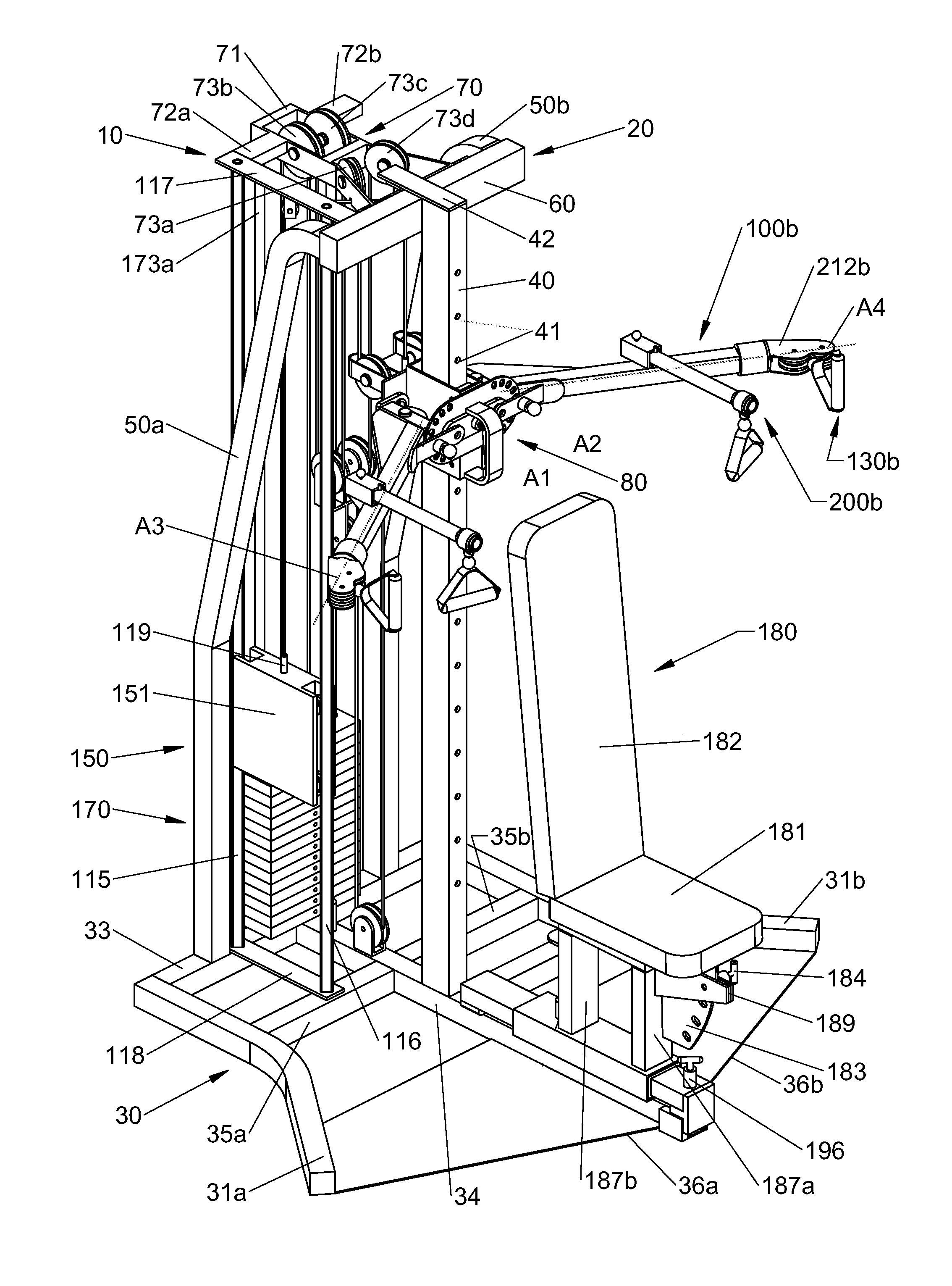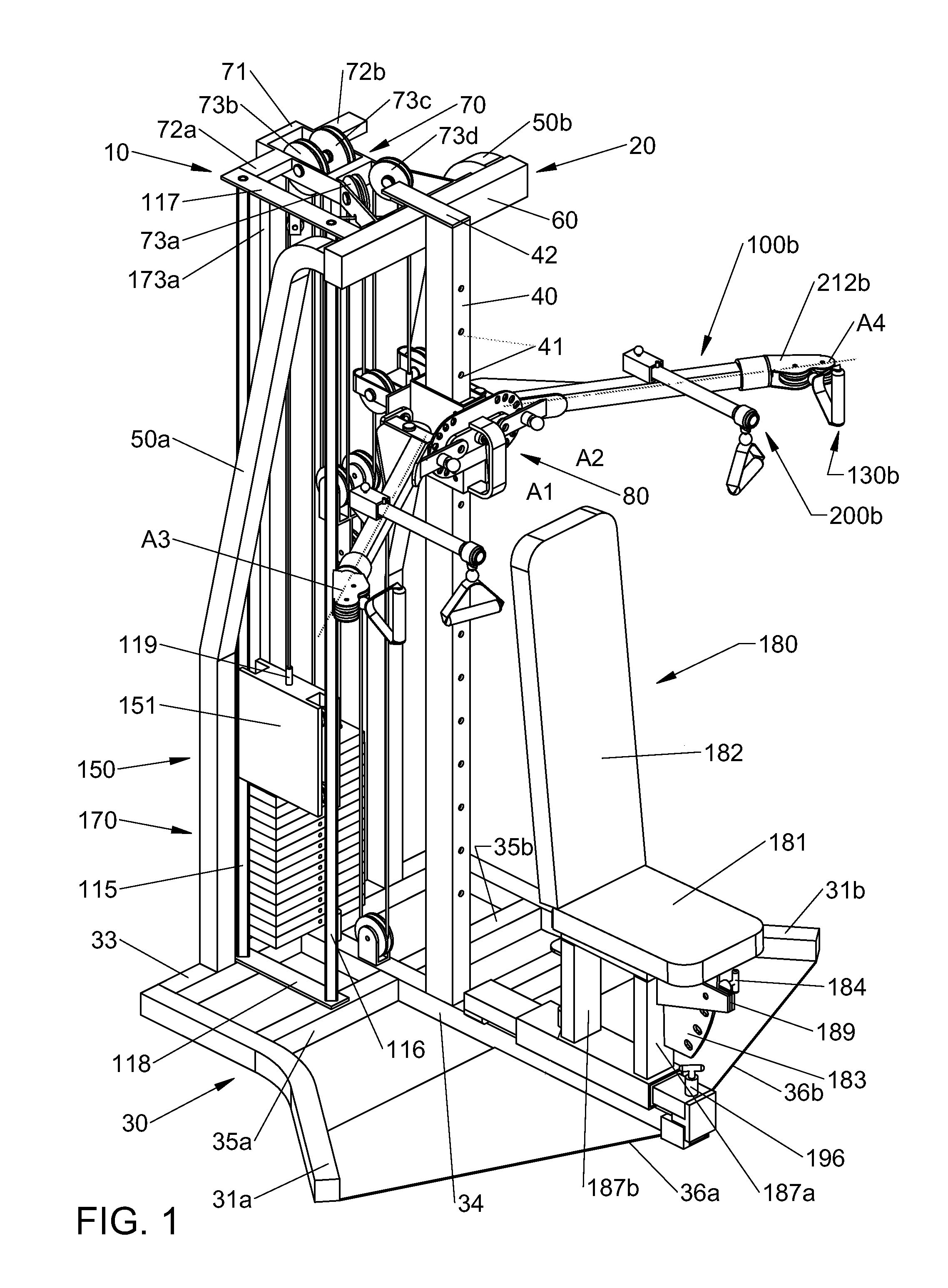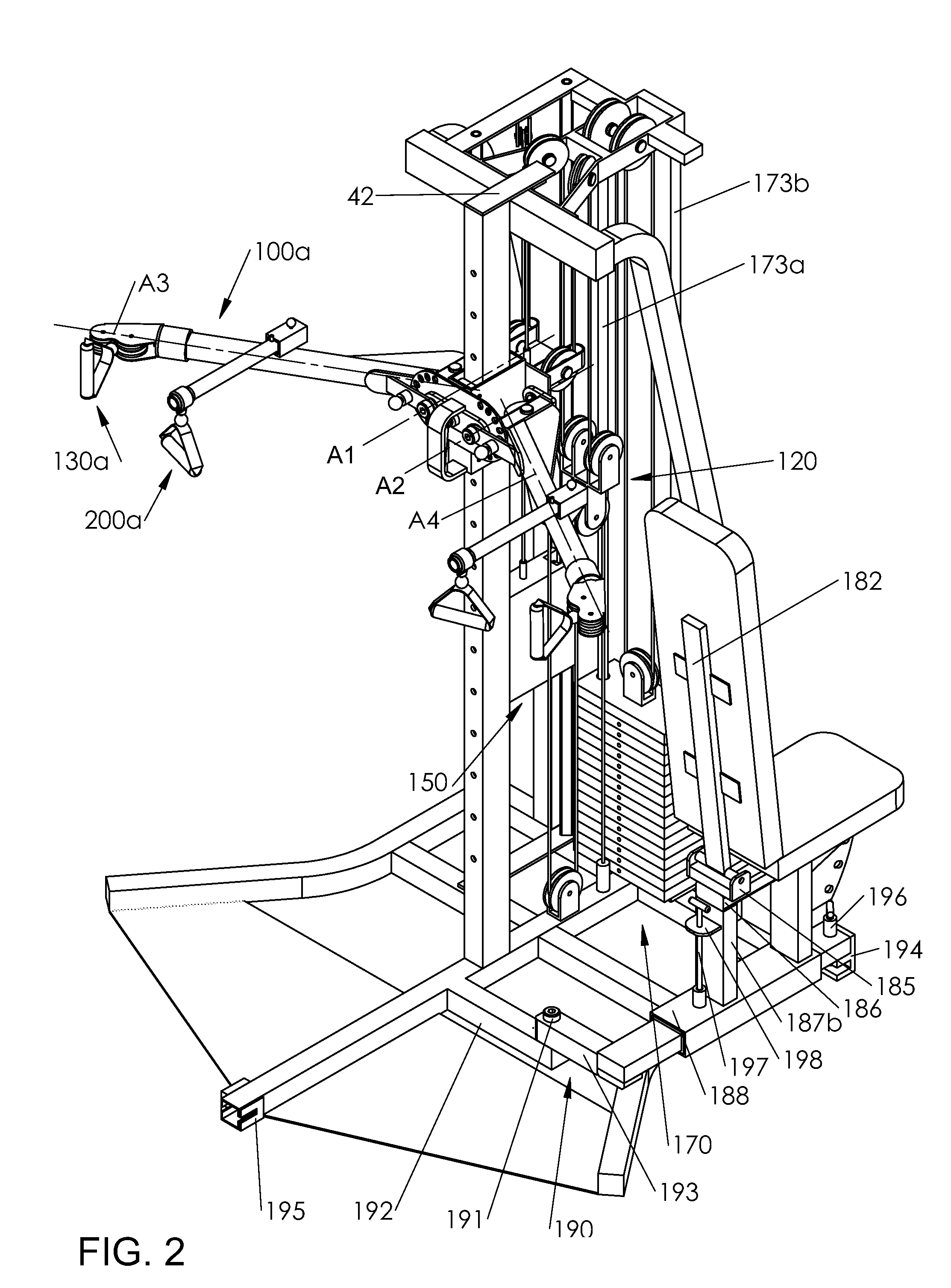Unfortunately, the majority of these devices are large, cumbersome and difficult to
handle.
Some of them have limitations on positions available for exercise, and others have complicated and
time consuming adjustments.
Most of them lack versatility and are used only for strength exercises with one mode of resistance.
Machines that combine a stationary bench with a functional trainer have limitations because the presence of the bench prohibits many exercises.
The shortcoming of the described method of adjustment is that there are limitations on the positions that their arms can take.
More specifically they are not suitable for exercises that require the ends of the arms to be relatively close together and at about
waist height of the exerciser (such as a typical
rowing movement).
Arms are very long (in order to provide for high and low
pulley exercises) and awkward to
handle.
With the arms in a vertical position, there is not enough room in front of the
machine for exercises that require pure
vertical resistance (lat pull down, military press,
squat) and user have to adjust their
body position for these particular exercises, applying a vertical and an unnecessary
horizontal force.
The shortcomings of the described adjustment method are that three dimensional changes in the position of the very long arms require a lot of extra space, which is often not available.
Three dimensional adjustments can be confusing, awkward and can intimidate new users or potential buyers.
Creating new positions for exercise using three dimensional systems require adjustments at four locations, two for changing the height and two for changing the width of the arms which can be complicated and
time consuming, especially for multiple consecutive users of different sizes (height).
Repositioning of the bench involves multiple lifting and can be
time consuming and tiring.
Locations for adjustments are distant from each other and placed on two separate posts, forcing the user to walk between them to complete the desired changes, which can be time consuming.
In order to change the height and the width, the user has to complete a total of four adjustments at two separate locations distant from each other, which is complicated and time consuming.
The machine has a large structure because it uses two posts for height adjustment and two separate weight stacks, which greatly adds to the weight of the entire
assembly.
Carriages are heavy to
handle and placing them at the highest level is difficult because adjustment points are above the head of the
average size user.
The arms of this machine swing in a horizontal plane, and because of that the maximum available height for exercise is limited by the height of the posts with the sliding carriages.
The machine is equipped with a dip bar and a
chin up bar, but because they are installed at a fixed height they might be difficult to use for a below
average size user.
They provide only one fixed resistance equal to the
body weight of the user, which might not be suitable for many beginner or
intermediate level exercisers.
All of them use similar arm adjustment methods which does not provide positions for exercises that require starting points inside of the circle described by the ends of the arms.
Therefore, the major shortcoming of these machines is the limitations on the positions that their arms can take.
More specifically, they are not suitable for exercises that require narrow grip at about
waist height for the exerciser (such as typical
rowing movement).
Also, the machines are relatively low for many standing exercises and because the arms are configured too close to the front of the machine there is not enough space for exercises that require pure
vertical resistance.
Despite that the bench folds up for storage it prevents the user from performing many
user defined exercises, or these exercises must be done in awkward
body positions.
Another shortcoming of these machines is that they do not economically use the length of the cable.
The presence of the bench during exercises that do not require the use of the bench prohibits many exercises and many of them have to be performed in awkward positions.
The removable seat of the PT3 machine does not provide enough adjustability.
The arms of Body Craft mini / XPress do not provide for high
pulley exercise and due to this, additional lat pull down
assembly had to be added.
Shortcomings of such an arrangement are that it increases the size and the cost of the unit, beside that, most of the prior art dip bars and
chin up bar assemblies are installed at fixed heights and they might be difficult to use for a below
average size user.
Also, they provide one fixed resistance equal to the
body weight of the user which might not be suitable for many beginner or
intermediate level exercises.
 Login to View More
Login to View More  Login to View More
Login to View More 


